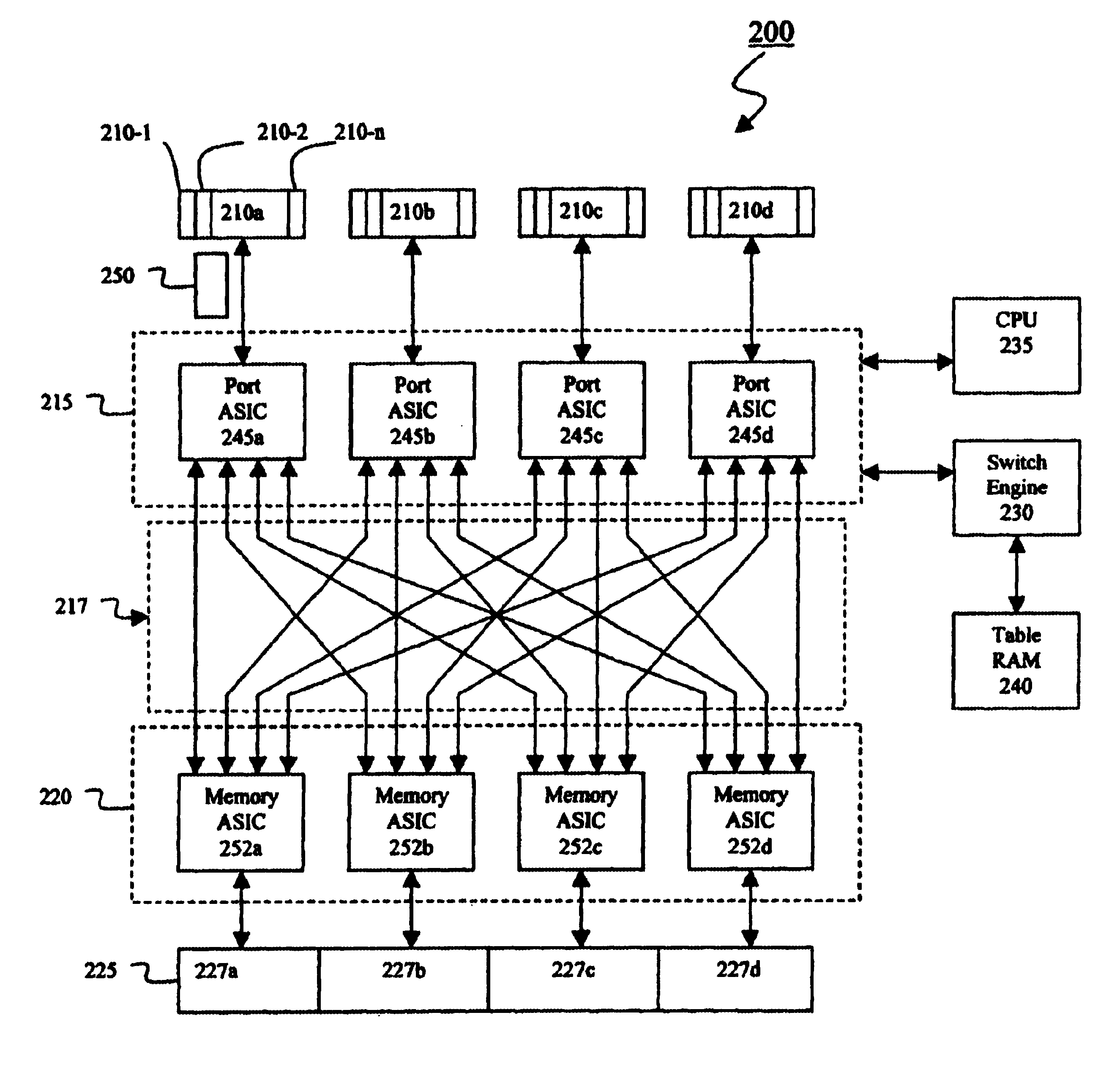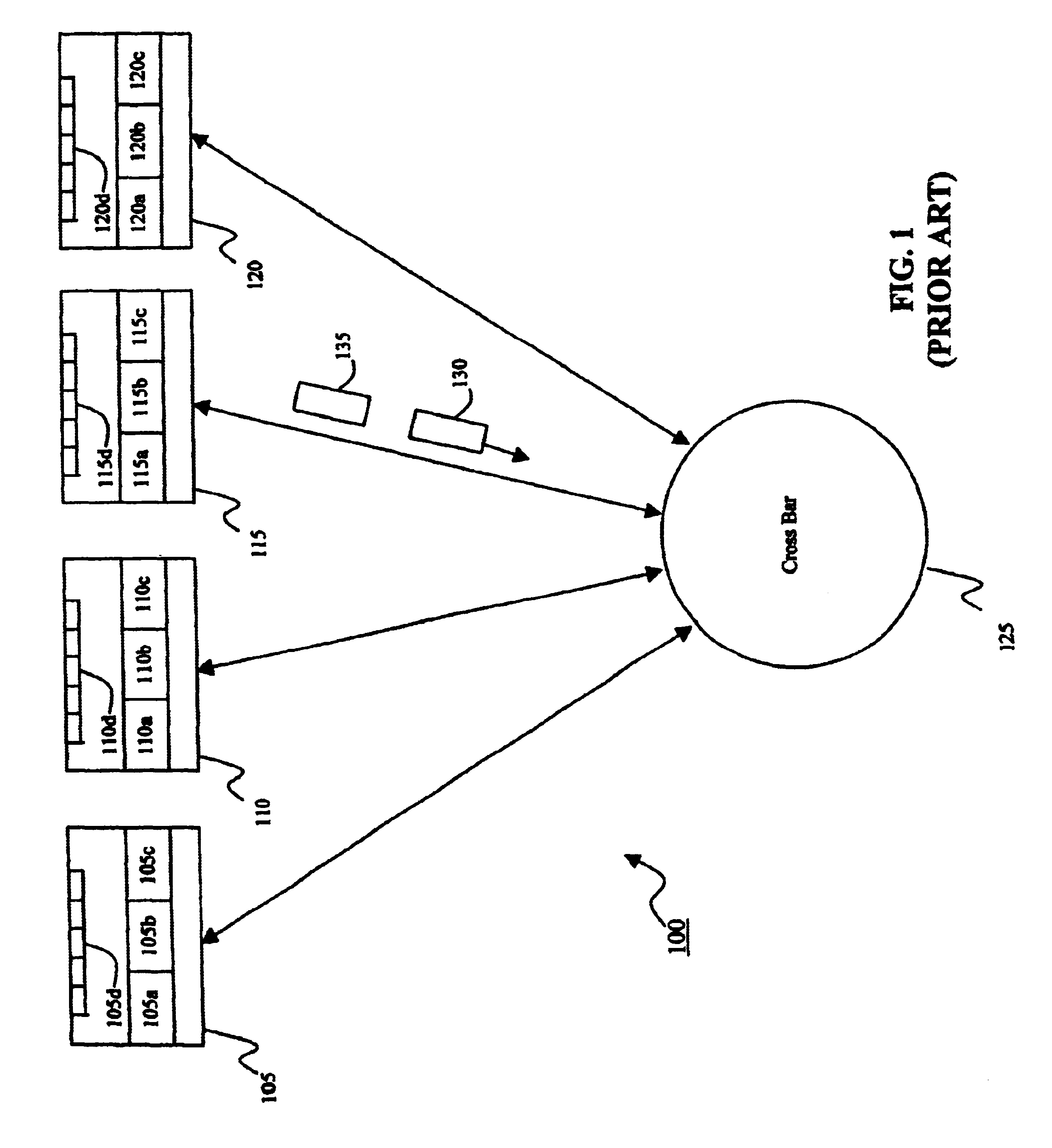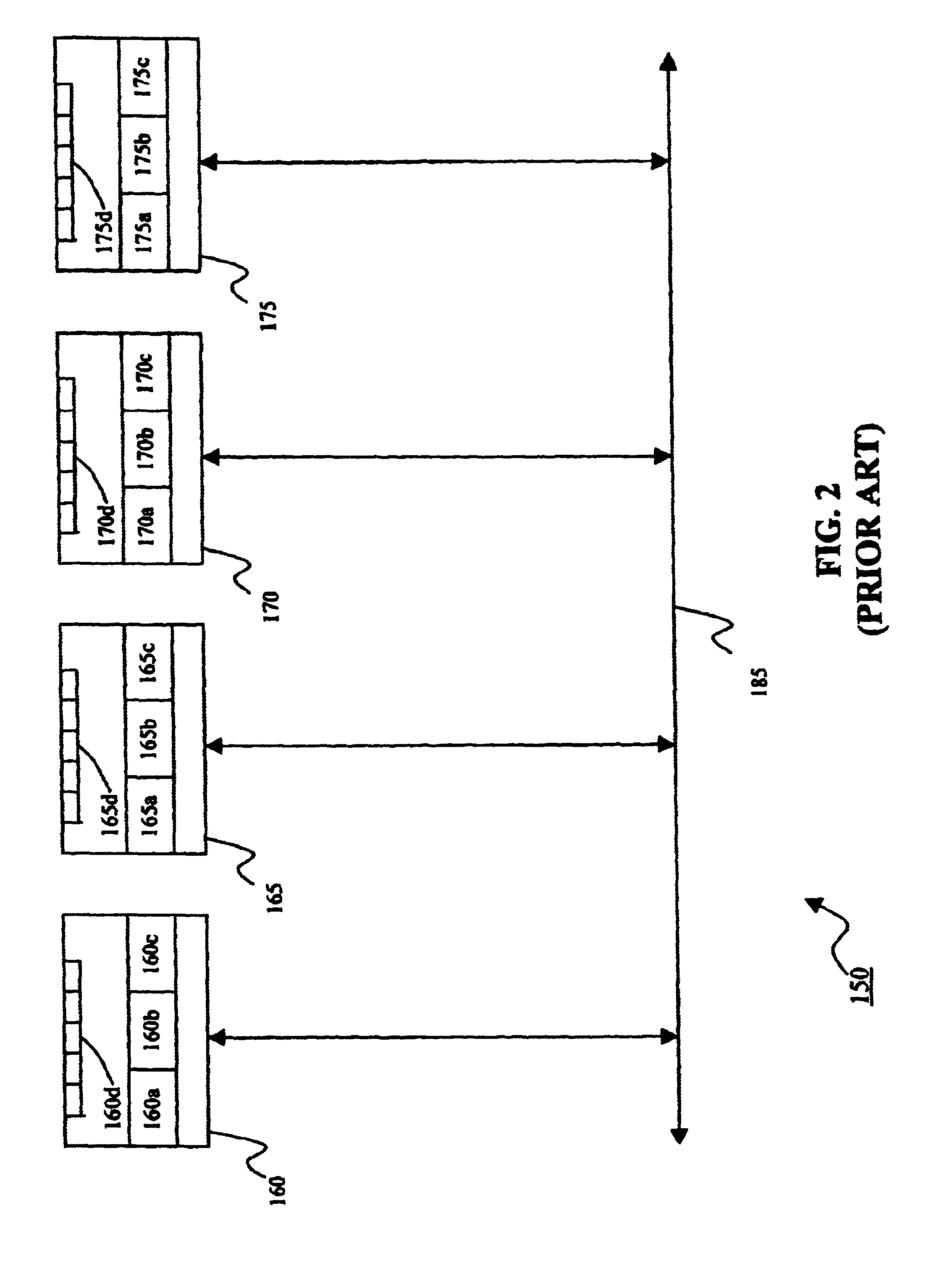Distributed switch memory architecture
a switch memory and switch technology, applied in the field of network switching, can solve problems such as packet transmission delay, unsatisfactory performance, and blockage of head of lin
- Summary
- Abstract
- Description
- Claims
- Application Information
AI Technical Summary
Benefits of technology
Problems solved by technology
Method used
Image
Examples
example 2
ndwidth of 16 Gbits / s is achieved by configuring two 64-bit SDRAM ports at 125 MHz per Memory ASIC.
example 3
ndwidth of 19:2 Gbits / s is achieved by configuring four Rambus DRAM ports at 600 MHz per Memory ASIC.
As memory technology advances, the advances can be incorporated in the memory switch system of the invention by appropriately configuring the Memory ASICs 252a-252d and the memory pool 225 as discussed above. Other parts of the switch system 200 need not be affected. Additionally, as alluded to above, the ports 210-1 . . . 210-n can share the use of the memory pool 225, and the memory pool 225 is available to be shared unequally by all ports 210-1 . . . 210-n. Thus, each port 210-1 . . . 210-n is not subject to a "fixed-size" limitation. In contrast, under the more restrictive "fixed-size" design, ports of a given node can only share memory addresses which are available for that given node.
Moreover, it is possible to utilize the memory banks of DRAM devices so that, for example, a packet chunk is being received or stored in one memory bank of a given DRAM device, while another packet...
PUM
 Login to View More
Login to View More Abstract
Description
Claims
Application Information
 Login to View More
Login to View More - R&D
- Intellectual Property
- Life Sciences
- Materials
- Tech Scout
- Unparalleled Data Quality
- Higher Quality Content
- 60% Fewer Hallucinations
Browse by: Latest US Patents, China's latest patents, Technical Efficacy Thesaurus, Application Domain, Technology Topic, Popular Technical Reports.
© 2025 PatSnap. All rights reserved.Legal|Privacy policy|Modern Slavery Act Transparency Statement|Sitemap|About US| Contact US: help@patsnap.com



